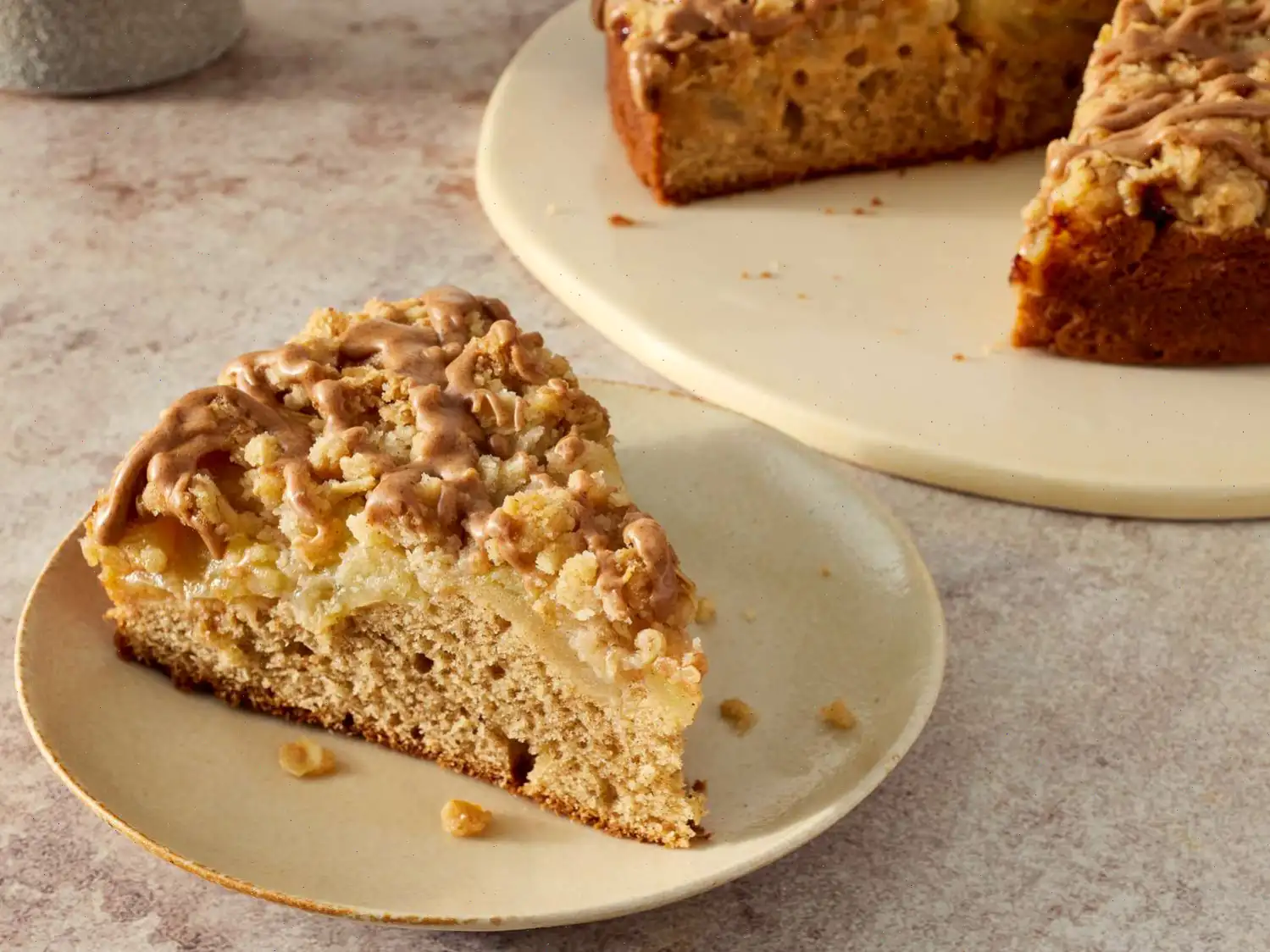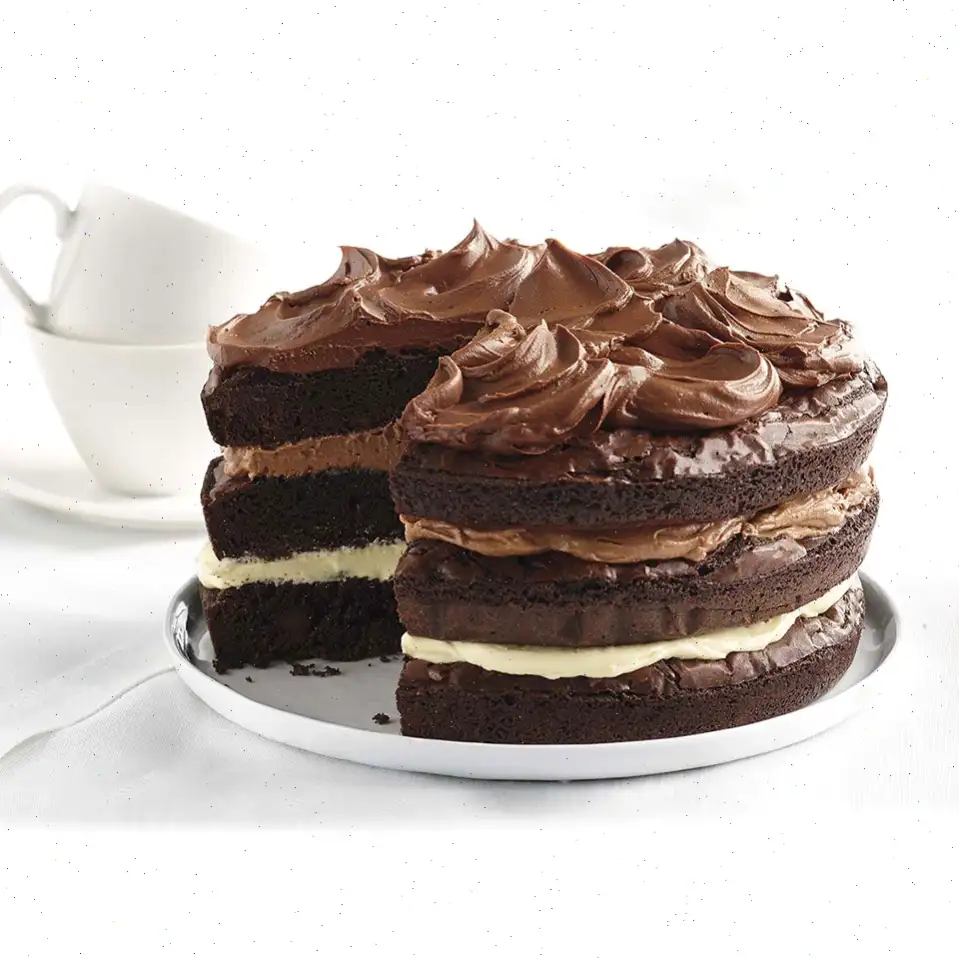
Apple Cider Cut-Out Cookies Recipe
Ingredients
Cookies
- 3/4 cup unsalted butter
- 2 cups apple cider
- 1/2 cup light brown sugar
- 1/2 cup granulated sugar
- 1 large egg
- 2 teaspoons vanilla extract
- 1 1/2 teaspoons ground cinnamon
- 3/4 teaspoon salt
- 1/2 teaspoon ground nutmeg
- 1/8 teaspoon ground cloves
- 1/8 teaspoon ground allspice
- 3 cups all-purpose flour
- 1 tablespoon cornstarch
- 1/8 teaspoon baking powder
Icing
- 2 tablespoons reduced apple cider
- 2 tablespoons heavy cream
- 1 tablespoon apple cider (not reduced), or more as needed
- 1 1/2 cups confectioner's sugar
- 1 tablespoon honey
- 1/2 teaspoon vanilla extract
- 1/8 teaspoon salt
- Ground cinnamon for sprinkling (optional)
Directions
- Place the butter in a light-colored saucepan over medium heat. Stir frequently until the butter turns golden brown and releases a nutty aroma, about 5 to 10 minutes. Pour the browned butter into a large mixing bowl.
- In the same saucepan, carefully pour in 2 cups of apple cider (it will sputter). Return the pan to medium heat and cook, stirring often, until the cider reduces to about 1/2 cup, which takes around 20 to 25 minutes. Set aside 2 tablespoons of the reduced cider for the icing. Pour the rest of the reduced cider into the mixing bowl with the browned butter. Let it cool for 20 minutes.
- Add the brown sugar, granulated sugar, egg, vanilla extract, ground cinnamon, salt, ground nutmeg, ground cloves, and ground allspice into the butter-cider mixture. Whisk until fully combined.
- Gradually add 1 1/2 cups of flour, cornstarch, and baking powder to the mixture. Mix until just combined, then add the remaining 1 1/2 cups of flour and continue mixing until combined. The dough will be thick. Knead the dough a few times until smooth.
- Shape the dough into a flat disc, wrap it in plastic, and refrigerate for at least 1 hour, or up to 48 hours.
- When ready to bake, remove the dough from the refrigerator. If it is too stiff to roll out, let it sit at room temperature for about 15 minutes to soften slightly. Lightly flour a work surface and roll the dough out to a thickness of about 1/4 inch. Use cookie cutters to cut out shapes. Gather the dough scraps, re-roll, and cut out more cookies until all dough is used up.
- Place the cookie cut-outs onto a parchment-lined baking sheet, spacing them about 1 inch apart. Refrigerate the cut-out cookies for at least 15 minutes.
- Preheat the oven to 350F (175C). Once the oven is hot, bake the cookies in batches for 10 to 12 minutes, or until they are slightly puffed. Let the cookies cool on the pan for a few minutes before transferring them to a wire rack to cool completely.
- For the icing, whisk together the reserved 2 tablespoons of reduced apple cider, heavy cream, 1 tablespoon of non-reduced apple cider, powdered sugar, honey, vanilla extract, and salt until smooth. If the icing is too thick, add more apple cider to reach the desired consistency. If it is too thin, add more powdered sugar to thicken it.
- Place a wire rack over a baking sheet. Gently hold a cooled cookie by its edges and dip the top into the icing. Allow excess icing to drip off for a few seconds before inverting the cookie and placing it on the wire rack to catch any drips. Optionally, sprinkle with ground cinnamon before the icing sets.
- Repeat the process with the remaining cookies. Once the icing has set, store the cookies in an airtight .
Nutrition Facts (per serving)
- Calories: 113
- Total Fat: 4g (5% DV)
- Saturated Fat: 2g (12% DV)
- Cholesterol: 15mg (5% DV)
- Sodium: 51mg (2% DV)
- Total Carbohydrate: 18g (7% DV)
- Dietary Fiber: 0g (1% DV)
- Total Sugars: 11g
- Protein: 1g (2% DV)
- Vitamin C: 5mg (6% DV)
- Calcium: 9mg (1% DV)
- Iron: 1mg (3% DV)
- Potassium: 32mg (1% DV)
* Percent Daily Values are based on a 2,000-calorie diet. Your daily values may be higher or lower depending on your calorie needs.
The History and Heritage of Apple Cider Cut-Out Cookies
Apple cider cut-out cookies trace their origins to early American colonial traditions, when apple orchards were abundant and homemade sweets were a seasonal delight. Colonists would often preserve apple cider through fermentation or reduction, using it as a natural sweetener and flavoring for cakes and cookies. The technique of creating cut-out cookies with spiced dough emerged as a festive practice, particularly during harvest time and autumn celebrations. Over generations, the recipe evolved to balance the rich, spiced flavor of cider with the tender, buttery texture of shortbread-like dough, making it a beloved seasonal treat.
Regional Variations and Distinctions
While apple cider cookies are popular across the United States, regional variations reflect local ingredients and traditions. In New England, where apple orchards are historically prolific, these cookies often feature a more pronounced cider reduction, intensifying the apple flavor. In the Midwest, cinnamon and nutmeg are sometimes blended with clove and allspice to mimic the spices used in traditional pumpkin pies. The icing also varies: some regions prefer a simple powdered sugar glaze, while others add reduced cider and honey to highlight the autumnal flavors.
Comparison with Similar Treats
Apple cider cut-out cookies differ from other classic cookies such as sugar cookies or gingerbread. Unlike sugar cookies, which rely primarily on butter and sugar for flavor, cider cut-outs incorporate reduced apple cider and warm spices, giving them a moist, aromatic profile. Compared to gingerbread, the dough is less dense and buttery, and the apple cider provides a fruity undertone rather than a molasses-heavy flavor. The cut-out design and icing finish make these cookies visually distinctive, suitable for festive occasions.
Traditional Serving Occasions
These cookies are typically served during autumn and winter holidays, especially around Halloween, Thanksgiving, and Christmas. They are popular at fall festivals, family gatherings, and bake sales. Often, they are presented on decorative platters, iced with cinnamon-sprinkled glaze, and paired with warm beverages such as spiced apple cider or tea. Their visual appeal also makes them a favorite for gift-giving during the holiday season.
Fun and Intriguing Facts
- Reducing apple cider before adding it to the dough concentrates the natural sugars and flavors, creating a deeper, richer taste without added artificial sweeteners.
- The browned butter used in the recipe enhances the nutty aroma, a technique borrowed from classic European shortbread traditions.
- Despite their complex flavor, these cookies keep well for several days in airtight containers, and the apple flavor becomes even more pronounced after a day or two.
- Cut-out cookies offer an opportunity for artistic expressionfamilies often create seasonal shapes like leaves, pumpkins, or stars, making them a fun interactive baking project.
- Apple cider cut-outs exemplify the fusion of early American and European baking influences, blending fruit-based sweetness with spice and butter-rich dough for a uniquely autumnal treat.








